Tower Bridge: Landmark marks 120 years by recalling past
- Published
It is one of London's most iconic landmarks, which tourists - and Londoners - flock to every day. Now, in 2014, it has reached its 120th anniversary.
Despite its age, the bridge still plays a vital part in river life.
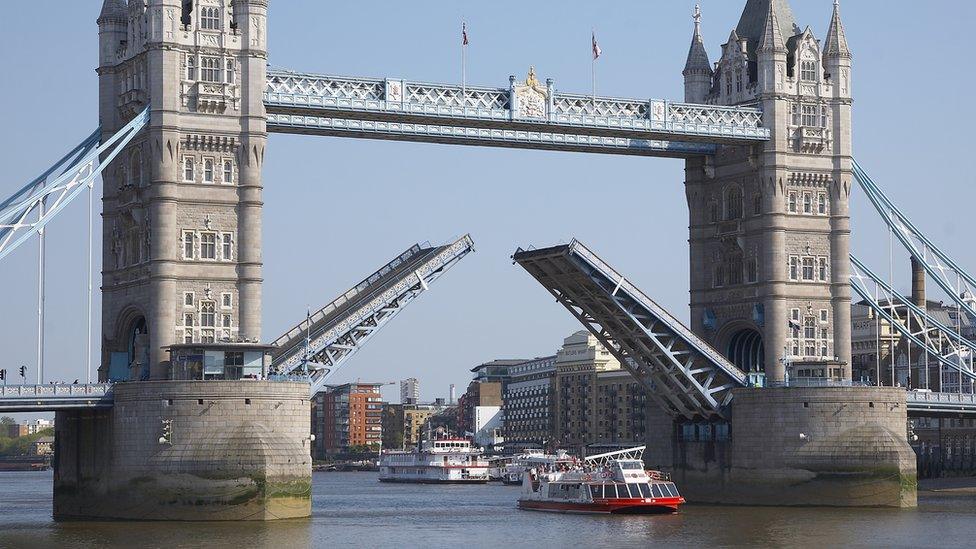
Every year it opens and closes nearly 1,000 times. Nowadays it is mainly used for vessels, war ships, sailing barges and cruises.
When it opened it was a different story, and it played a vital part in linking all the different parts of an ever-expanding city.
Before, London Bridge was the only crossing on the Thames and as the capital expanded more bridges were built, but they were all constructed to the west of London Bridge.
With the East End population exploding another option was needed so, in 1876, it was decided that another bridge should be built in the area.
Some 50 designs were put forward, and in 1884, architect Horace Jones's now iconic design was chosen.
Construction cost £1,184,000 and took 432 men eight years to build. Ten men died while working on it.
The bridge officially opened in 1894.

When it was built, Tower Bridge was the largest bascule bridge in the world. The bascules - French for see-saw - moved up and down to open and close the bridge.
Now as part of celebrations to mark its birthday, people are being given the opportunity to explore it in a whole new way - underneath.
Every weekend for the rest of January and March, visitors can experience the inner workings of the bridge as tours are being held in areas normally off limits.
These include the bridge control room, machinery room and the immense Bascule Chamber which sits deep below the River Thames.
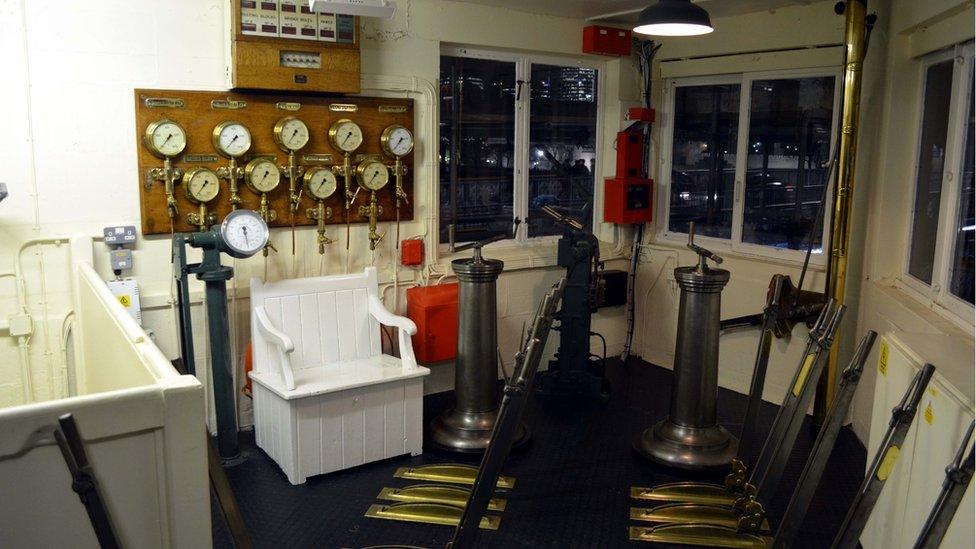
The control room situates just behind the north tower. It was here where engineers would operate the bridge by pulling levers to fire up the engines.
On a clear day, you can see the bridge through the window. However, the smog used to be so bad in the city that this was not possible on some days so in order to check that it was working, engineers used a "monkey on tips" - a brass column which went up and down as the bridge did.

Tour-goers will then enter the machinery room, which is where the original Victorian hydraulic engine sits. This was the driving force behind the bridge up until 1973, when it went electric.
Peter Brown, senior technical officer, explained how the hydraulic engine draws back the bolts that hold the two bascules together and sets the counterweights in motion to draw the bridge upwards.
To do this, the hydraulics, which used steam to power the enormous pumping engines, created energy which was then stored in six massive accumulators, such as this one.
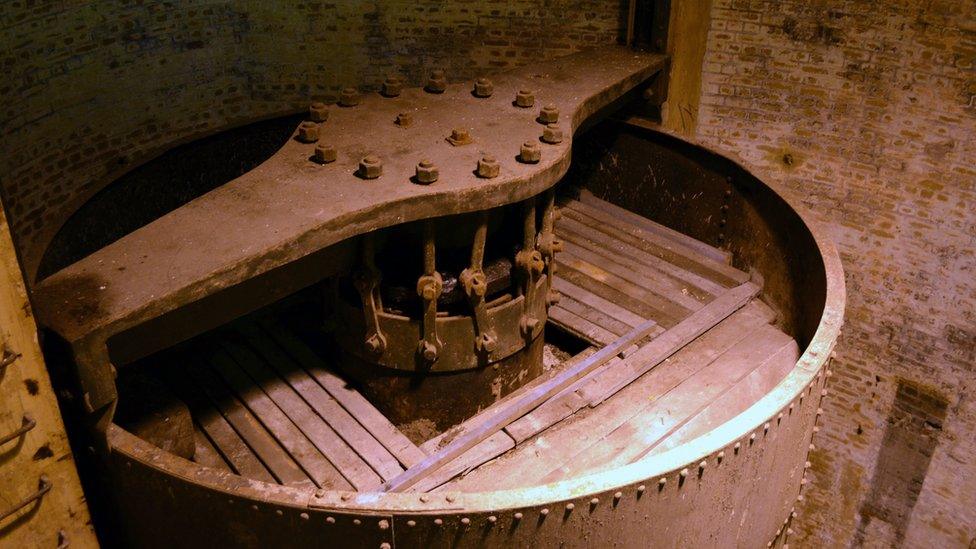
After visiting the machinery room, the tour continues down a steep and narrow spiral staircase, which is not designed for those with a fear of heights.
Halfway down, the tour passes an accumulator, which was used to feed the driving engines that drove the bascules up and down.
The accumulators weigh 100 tonnes and operated a psi - the unit of pressure needed - of 750. A steam locomotive operates at 200-250 psi.

The stairs then lead through to an impressive, cavernous chamber. Situated underneath the bridge, the booming sounds of vehicles crossing the river reverberate around the chamber.
The chamber is situated 9m (30ft) below the river and can be an unnerving experience - but that could be due to the drop in temperature.
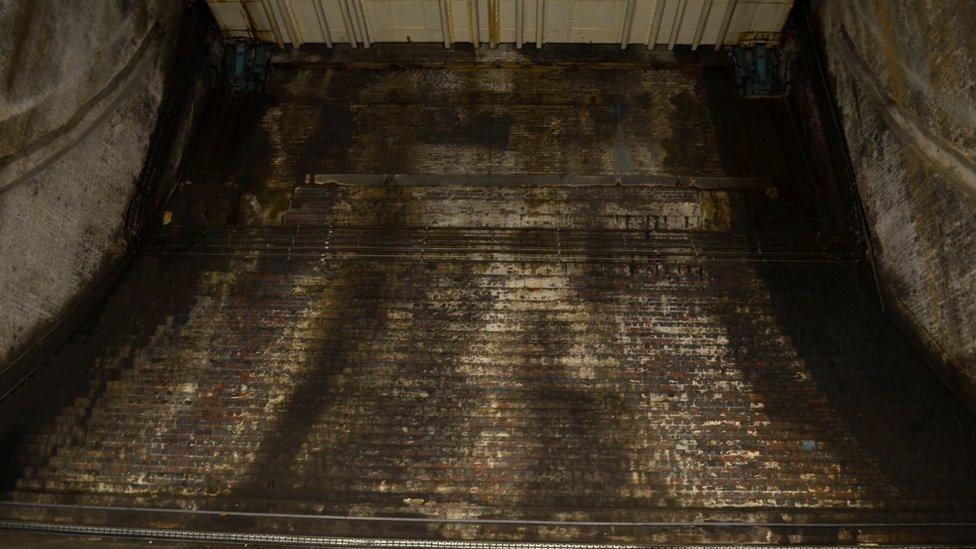
Mr Brown said taking groups down to the dimly lit chamber was one of the many things he enjoyed about his job.
Although he has worked for Tower Bridge for 20 years, he has never seen it operated using the steam engines - something he would love to see.
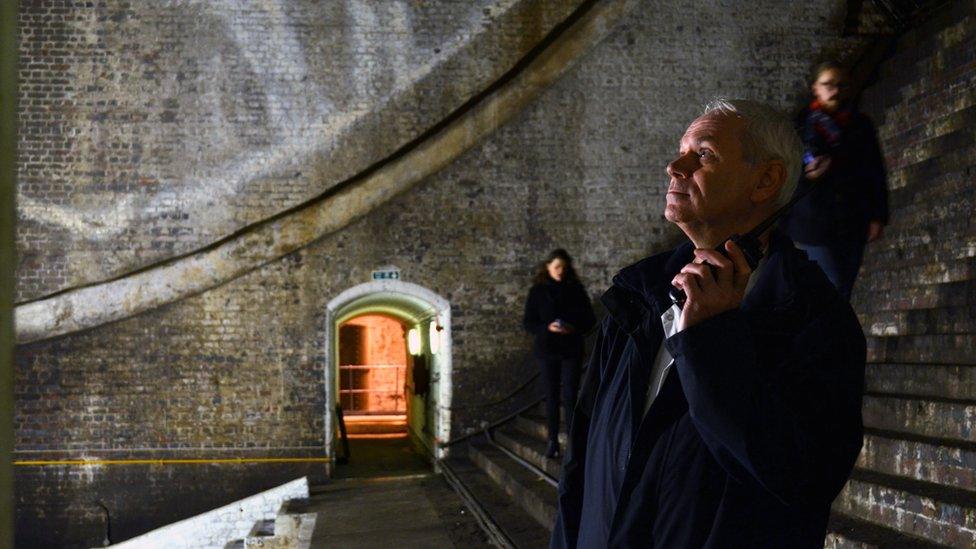
Although it is more than a century old, Tower Bridge is still very much a part of London life.
In the last couple of years, it played a part in the Queen's Diamond Jubilee celebrations and London 2012 as not only did it have the Olympic rings hang from it, but, in what was one of the highlights of the opening ceremony, David Beckham sped underneath the bridge as he was on his way to delivery the Olympic torch to the stadium.
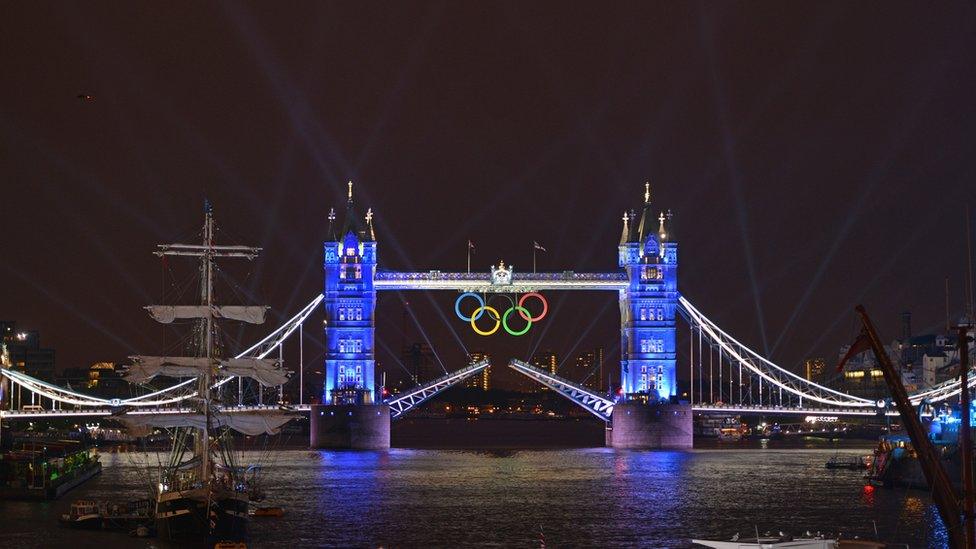
- Published3 June 2012